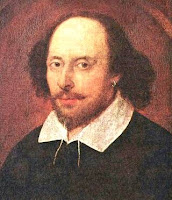Introduction
No writer in the history of world literature holds such a unique position as the Elizabethan playwright William Shakespeare does. Shakespeare's works are highly remarkable for their graceful style and universally celebrated for their comprehensive understanding of human condition. Shakespearean works exhibit the power of literature to transport the audience into a magnificent word of mystery and fantasy. Shakespeare is definitely the unchallengeable master of romantic literature. His writings have proven that it is still possible to explore human life without presenting it realistically. He was quite aware of the classical formulas of writing, but opted to write in his individual style. His novel dramatic technique thought to have paved the way for the 20th century romantic movement. Following his style a number of great romantic writers such as Wordsworth, Shelley, Keats, Coleridge shaped their poetic career. His works of art have been entertaining for the last few centuries and still continue to amaze us with their artistic and universal appeal. His friend and fellow dramatist Ben Jonson could recognise his brilliance and wrote in praise of him:
"He was not of an age, but for all time!"
William Shakespeare is the first significant writer in English literature whose dramatic skill transformed ordinary human character and action into unforgettable piece of art. Such a writer cannot definitely stay out of criticism. As a result, we have a number of rumours about him that sometimes baffle us. One such tradition strangely declares that the Shakespearean dramas were not written by Shakespeare himself. According to this claim these plays were originally written by Francis Bacon, or the Earl of Oxford, or a syndicate of playwrights using the name of Shakespeare as pen name. Even sometimes it is doubted whether there exited a real person named Shakespeare. But such theories lack sound historical evidence.
Shakespeare’s writing style has been a subject of scrutiny for a number of critics. Many critics believe that some of his writings lack originality. The dramatist borrowed his raw materials largely from classical legend, history, and biography;Italian tales; English and Scottish chronicles; even older plays and folk tales. But all these old works were brilliantly transformed by a freshness of presentation. Mixing of different plots never made his plays incoherent. These dramatic reconstructions have become the most original creations of Shakespeare. The patterns of his plots are sometimes complex but always clearly woven. His characters are true to life and well developed. In his plays he mixed tragedy and comedy since they are mixed in human life.
Life
Surprisingly, Shakespeare is the single most writer of his age to have such a rich amount of information about his life. But there are truly no authentic source to write an accurate biography for Shakespeare. Most of his biographies are written on the basis of assumptions.Early Life
William Shakespeare (also spelled Shakspere, Shaksper, Shaxper, and Shake-speare, due to the fact that spelling in the Elizabethan times was not fixed and absolute) was born on or about April 23, 1564 in the village of Stratford-on-Avon in the country of Warwickshire. His birth is assumed to have occurred at the family house on Henley Street.The third of eight children, William Shakespeare was the eldest. His father John Shakespeare was a farmer’s son from the neighbouring village of Stratford. He came to Stratford about 1531 and began to prosper as a trader in corn, meat, leather, and other agricultural products. His mother Mary Arden was from a family much above her husband’s social status. She was the daughter of a prosperous farmer, descended from an old family of mixed Anglo-Saxon and Norman blood. It is generally believed neither of the parents could read nor write.Little is known about Shakespeare’s formal education. The young Shakespeare probably attended the King Edward VI Grammar School in central Stratford, which educated the sons of Stratford citizens. The curriculum of that school was largely based on the study of Latin grammar and literature. Shakespeare’s writings evince that he was greatly influenced by the classical Latin writers like Ovid as well as other Latin works. But his real his real talent were greatly influenced by the men and natural surroundings of his village. He grew up in the beautiful village of Stratford with sights and scenery that could stir up anyone’s creative side. Many of his literary works reflect the beauty and splendour of his birthplace.
When Shakespeare turned 14 years old, his father lost his property and fell into debt. Shakespeare probably left school to help to support his family. But it is not exactly clear what occupation did he follow for the next eight years. However, a potentially reliable claim is that during his father’s financial decline Shakespeare had been a schoolmaster in the country.
At the age of 18 he married 26 year old Anne Hathaway (on November 27?, 1582), the daughter of a Warwickshire farmer. Now it is believed that young Shakespeare might have been involved in a love affair with Anne.There appears to have been some haste in arranging the ceremony, presumably because Anne was 3 months pregnant. The birth of a daughter six months after the marriage also provides some explanation for that quick arrangement.
After his marriage, Shakespeare left few traces in the historical record until he appeared on the London theatrical scene. Indeed, the late 1580s (years between 1585 and 1592) are known as Shakespeare’s “lost years” because no evidence has survived to show exactly where he was or why he left Stratford for London. On May 26, 1583, Shakespeare’s first child, Susanna, was baptised at Stratford. Twin children, a son, Hamnet, and a daughter, Judith, were baptised on February 2, 1585. Hamnet died in 1596. Sometime after the birth of the twins, Shakespeare apparently left Stratford, but no records have discoverd to reveal his activity between their birth and his presence in London in 1592, when he was already at work in the theatre. An unsubstantiated report claims Shakespeare left Stratford after he was caught while stealing deer in the park of Sir Thomas Lucy, a local justice of the peace. Another theory has him leaving for London with a theatre troupe that had performed in Stratford in 1587.
Life in London
Shakespeare’s initial life in London began as a humble one. Tradition claims that he used to hold the horses at the door of a theatre-house, where the gentlemen of rank and fashion came to enjoy performance on horseback. He got interested in the theatre from the very beginning and from outside he found his way to the inside of the theatre. He became an actor in minor parts until he gradually worked his way to a better position. Subsequently he was entrusted with the task of repairing the old plays, and in this task he received his apprenticeship in the dramatist’s craft. From 1592 his individual dramatic career began and gifted the world thirty seven plays, which are without question the richest treasure in English literature.The theatre served Shakespeare’s financial needs very well. In 1597 he bought New Place, a substantial three-story house in Stratford. With the opening of the splendid Globe Theatre in 1599, Shakespeare’s fortunes increased and in 1602 he bought additional property: 43 hectares (107 acres) of arable land and 8 hectares (20 acres) of pasture north of the town of Stratford and, later that year, a cottage facing the garden at New Place. In 1605 he bought more property in a neighboring village. His financial activities can be traced, and his final investment is the purchase of a house in the Blackfriars district of London in 1613.
Last Years
After about 1608 Shakespeare began to write fewer plays. For most of his working life he wrote at least two plays a year; by 1608 he had slowed usually to one a year, even though the acting company continued to enjoy great success. In 1611 Shakespeare retired from London theatre and returned to his village, where he had established his family and became a prominent citizen. He lived there still his demise. He died on April 23, 1616 at the age of 52. He also died on his birthday, if the tradition that he was born on April 23 is correct. He was married to Hathaway until his death and was survived by his two daughters, Susanna and Judith. Susanna married Dr. John Hall, a doctor with a thriving practice in Stratford, in 1607. His younger daughter, Judith, married a Stratford winemaker, Thomas Quiney, in 1616. Shakespeare’s wife, Anne, died on August 6, 1623. Soon after her death, Susanna and John Hall moved into New Place, where they lived until their deaths, his in 1635 and hers in 1649. Their daughter, Elizabeth Hall, died childless in 1670. Judith Quiney had three sons, but none lived long enough to produce heirs, and she died in 1662. Thus, by 1670, the line of Shakespeare’s descendants had reached its end. There are no direct descendants of the playwright alive today.Shakespeare was buried in the chancel of Holy Trinity Church in Stratford-upon-Avon. He was granted the honour of burial in the chancel not on account of his fame as a playwright but for purchasing a share of the tithe of the church for £440. A monument placed by his family on the wall nearest his grave features a bust of him posed in the act of writing. Each year on his claimed birthday, a new quill pen is placed in the writing hand of the bust. It is assumed Shakespeare himself wrote the epitaph on his tombstone:
Good friend, for Jesus' sake forbear
To dig the dust enclosèd here;
Bleste be the man that spares these stones,
And cursed be he that moves my bones.
Shakespeare’s Plays
So far as is known Shakespeare had no hand in the publication of any of his works. Only 16 plays were published before his death. Almost all the plays of Shakespeare were printed posthumously by his fellow actors, John Heminges and Henry Condell in a volume called First Folio in 1623. They were published from Shakespeare’s original manuscripts, though several of them had been obtained from earlier published Quartos. The traditional division of his plays into tragedies, comedies, and histories follows the logic of the First Folio. It is at this point that stage directions, punctuation and act divisions enter his plays, setting the trend for further future editorial decisions. Modern criticism has also labelled some of his plays “problem plays” or tragi-comedies, as they elude easy categorisation, or perhaps purposefully break generic conventions. The term “romances” has also been preferred for the later comedies.The exact date of composition of Shakespearean plays is a highly disputable issue. By using evidences of style, versification, and general tone it has been possible to arrange the plays in their chronological order. On the whole, there is a unanimity among the critics about this order. The dramatic career of Shakespeare has been divided into four sharply-defined periods and the plays of each period bear certain family resemblances.
(i) The First Period: This period covers the years 1588-1596. This was a period of apprenticeship and was largely experimental. The works of this period are immature and the style is often crude and artificial. The plays written in period are:
Titus Andronicus; Henry VI (three parts); Love’s Labour’s Lost; Comedy of Errors; Two Gentlemen of Verona; Richard III; Romeo and Juliet.
(ii) The Second Period: This period covers the years 1596-1600. It is the period of great comedies and chronicle plays. The plays written in this period shows rapid growth of his genius. These plays reflect a deeper understanding of human life and human nature. This is the period when he abandoned rime and used blank verse. The plays of this period are:
King John; The Merchant of Venice; Henry IV (Part I & Part II); Henry V; The Taming of the Shrew; The Merry Wives of Windsor; Much Ado About Nothing; As You Like It; and Twelfth Night.
(iii) The Third Period: This period includes the years 1601-1607. It is the period of the great tragedies, and of the sombre or bitter comedies. It is considered the supreme phase of Shakespeare’s literary career. This is the time when Shakespeare wrote his greatest masterpieces. At this stage his attention was largely confined within the darker sides of human nature. The plays of this period are:
Julius Caesar; Hamlet; All’s Well That Ends Well; Measure for Measure; Troilus and Cressida; Othello; King Lear; Macbeth; Antony and Cleopatra; Coriolanus; and Timon of Athens.
(iv) The Fourth Period: This period covers the years 1608-1612. It is the period of the later comedies or dramatic romances. The plays of this period reveals the decline of Shakespeare’s dramatic powers since they lack careful characterisation, plot construction, and versification. During this period Shakespeare changed his temper from bitter and gloomy to serene and peaceful. Beauty and calmness, forgiveness and reconciliation are the main noted of the plays of this period, which have been called “romances”. he plays written in period are:
Pericles (1608); Cymbeline (1609); The Winter’s Tale (1610-11); The Tempest (1611); Henry VIII (unfinished).
References
Long, William J. English Literature: Its History and its Significance for the Life of the English
Speaking World. Delhi:AITBS, 2002
Watt, Homer A. and William W. Watt. A Handbook of English Literature. New York: Barnes &
Noble, 1946
Evans, Ifor. A Short History of English Literature. London: Penguin Books, 1976














